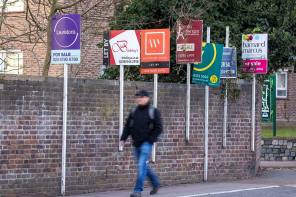

Mortgage brokers have expressed shock as lenders tighten their stress testing for buy-to-let investors in response to turbulence in the UK government bond market.
The mortgage market was plunged into chaos last week following chancellor Kwasi Kwarteng’s “mini” Budget which sent gilt yields soaring and led to hundreds of products being pulled from the market.
At the beginning of September, there were 2,075 buy-to-let products available on the market, but as of October 4 there were only 1,057, according to Money Facts.
Lenders have begun returning products to the market this week, but brokers say there is no respite in sight yet.
Yesterday (October 5) The Mortgage Works began applying a minimum stress rate of 8.49 per cent on all new buy-to-let applications as an interim measure, up from 5 per cent previously.
The move follows stress test hikes by a number of other lenders, including Natwest and TSB, and represents the highest stress test currently on the high street market.
A stress test is applied to a mortgage borrower’s application to check the borrower’s ability to repay their mortgage at a given interest rate, even if the actual current rate is lower.
When measuring affordability for buy-to-let mortgages, lenders will also require a ‘buffer’ in rental income, usually at 125 or 145 per cent.
This is done to ensure a borrower has enough surplus income from the property to pay for repairs, non-payment of rent and other eventualities like service charges.
But brokers say higher stress tests will make buy-to-let unviable.
Nottingham-based adviser at Harmony Financial Services, Imran Hussain said stress test rates will have to come down in the coming weeks, otherwise they will be “the death of buy-to-let”.
At a rate of 8.49 per cent, a basic rate tax payer borrowing £100,000 would need to be taking in a minimum of £885 rent per month.
With average rents in the Midlands of between £600 and £800, it means landlords face the choice of either upping rents significantly or choosing to sell.
The outlook is even worse in London, where yields are lower and rents are already sky high.
“Around Harrow in London, the previous rates were already affecting the affordability,” adviser Jiten Varsani told FTAdviser.
“This is of course going to have huge impacts for those landlords looking to buy. It will also restrict those looking to remortgage as they may no longer be eligible thus reverting to product transfers or switches.”
Landlords feel the effects
West Yorkshire Money, managing director, Adele Forbes is one such landlord who is feeling the effect of the rate rises and stricter-criteria landscape.
Forbes, herself a mortgage broker, has a buy-to-let property in Chester that she is considering refinancing.
The property needs work done to it but Forbes is hesitant to increase the rent on the property to cover this.
“You need to be a bit ethical, everyone is going through it,” she said.
But unless she is able to refinance the property at a rate that allows her to not increase the rent significantly, she will have to consider selling.
According to Money Facts, the average two-year fixed rate across all loan-to-values in the buy-to-let sector is now 6.48 per cent. There's only a marginal difference on a five-year rate, at 6.52 per cent.
“I'll probably do a two-year fixed, hoping rates might come down but I’m just going to break even doing that,” Forbes said.
Another mortgage and protection adviser said: “The optimist in me is trying to think that maybe this is a short-term amount of craziness and things will settle down, but realistically the rates are not going to be going any lower for some considerable time.
“Many of us that have been in this industry for a very long time I’ve never really experienced anything like this.”
The adviser gave the example of a client she spoke to this week with two existing buy-to-let properties who was considering buying another, but when they went through the available rates and the new stress testing they changed their mind.
“The stress tests have made a massive difference. The client I spoke to yesterday was looking at buying a property for £250,000 with a 75 per cent value mortgage.
“The rental income on the property is £1,250 per month but with the new The Mortgage Works stress test it needed to be £1,900 a month.
“With existing properties they are not applying the stress test, so you can do a product rate switch but we are looking at people who are just coming out of deals around 1.5 per cent now having to pay nearer to 6 per cent for the same deal.
“I really think buy-to-let is dead in the water at the moment,” she said.
Chancellor Kwasi Kwarteng has called the heads of the UK’s largest retail banks to a meeting today (October 6) to discuss the mortgage market following his “mini” Budget.
Chief executives including Alison Rose at NatWest, Debbie Crosbie at Nationwide and Charlie Nunn at Lloyds are expected to attend the session.
The meeting with retail and commercial bank bosses is part of an “ongoing engagement” with financial services companies, one person told the Financial Times.
Discussions are designed to get an understanding of lenders’ views on the mortgage market, according to a person familiar with the plan.
jane.matthews@ft.com



